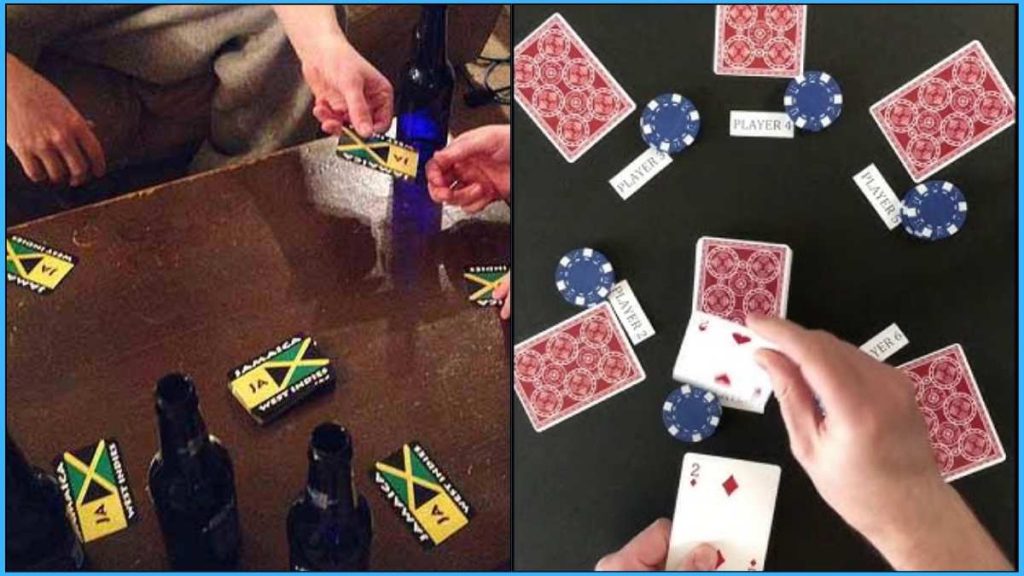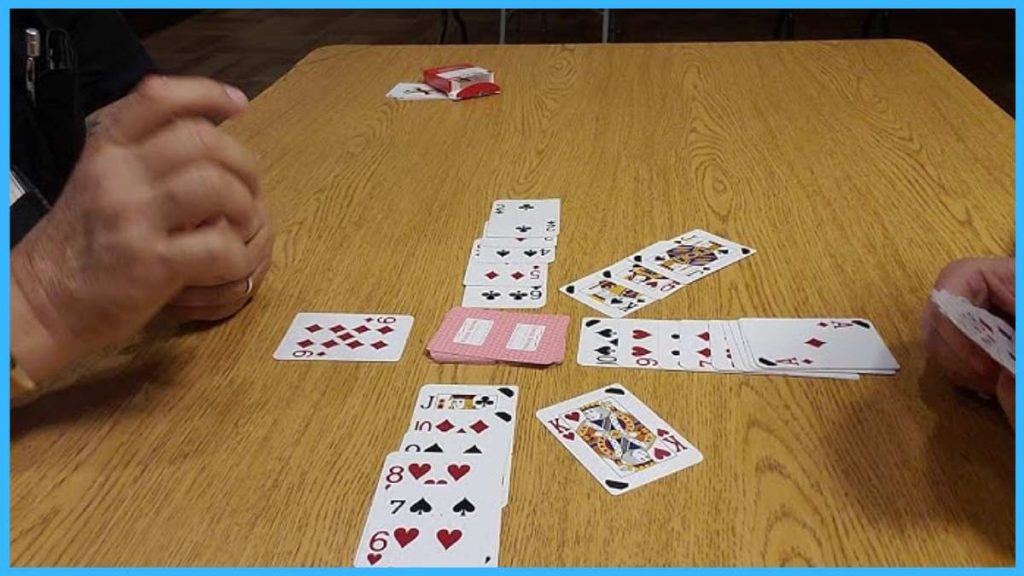Screw Your Neighbor Card Game Rules Be it a party, an impromptu gathering, or just about any social event, Screw Your Neighbor Card game is always a popular choice for having a good time, no matter the age! One doesn’t need a social event to enjoy an edge-of-the-seat card game. But what are the Screw Your Neighbor Card game rules?
As an easy card game to learn that is extremely popular among people of all ages, the rules are pretty basic, which makes it easy to play or pick up if you don’t know how to play it already. Ready to learn the Screw Your Neighbor Card Game Rules? Let’s go!
Table of Contents
How To Play Screw Your Neighbor Card Game?
To play the Screw Your Neighbor Card game, players must sit at a table or sit in a circle with a stable platform to keep their cards. Then, following the elementary rules of the game, each player is to reveal their card at the end of one circle (one round till the dealer). However, the player with the lowest-ranked card loses. The game continues this way till every player wants.
Objective
The game’s objective is to win every round by collecting or obtaining the highest-ranked card (King of any class) in the deck or the highest-ranked card amongst all the active players. Alternatively, you can ensure you do not have the lowest-ranked card among all the players to avoid getting eliminated each round.

Screw Your Neighbor Card Game Rules
There aren’t that many rules to playing any card game, for that matter, and when it’s Screw Your Neighbor Card game, it’s even simpler. All you need is to know the deck well and to understand the ranking or the points for each of the cards in that deck. While the game depends on luck (major), how you assess the game also makes a huge difference. But first, we shall learn about the Screw Your Neighbor Card game rules, and they are as follows.
Trading
The game’s trading process makes it so unpredictable and fun.
- Once the dealer has distributed the cards, the players can each look at their own cards without showing them to the other players.
- As per Screw Your Neighbor Card game rules, the play begins with the player sitting to the left of the dealer.
- Each player can either choose to accept the card they have been given or opt for a card exchange with the player to their left only.
- If they choose to keep their original card, they need to say “pass,” and the next player continues the game following the same process.
- A player must exchange their card if the player to their left asks for a trade. The only reason for which a player can choose not to do so is if they have a King (of any suite).
- The dealer can only exchange their card with the top card on the face-down pile. Alternatively, they can choose not to exchange. After exchanging, the dealer has to keep their original card at the bottom of the pile, per the screw your neighbor card game rules.
- If, upon drawing, the dealer gets a King, no exchange is made, and the dealer has to keep their original card.
Reveal
Once all the trades have been done or once a round is complete, all the players reveal their cards by placing them face-up on the table or the playing surface. The player with the card with the lowest point loses a life. Each player has three lives, per screw your neighbor card game rules.
Set-Up
To start the screw your neighbor card game, you only need 3 or more players willing to learn the game’s rules or already do. Then, you will need a pen and a piece of paper to note down the score at the end of each round and declare the winner at the end of the game. Finally, you will need a regular deck of playing cards (with 52 cards in the deck), and you will need to shuffle it well.
Once you have all of that ready, find yourselves a nice nook or a table to play the game and select the dealer for the round. Note: the dealer changes after every round on a clockwise rotation basis. In other words, if a player is elected to be the dealer for the first round, then the player to their immediate left will begin the game for that round. In the following round, that player will be the next dealer, and so on, per screw your neighbor card game rules.
Card Ranking
The only way to determine a winner for the round or the game is to know who has the lowest or highest ranking card. As mentioned, the King carries the highest point, and the Ace carries the lowest. The other cards in the deck have points allotted in the following order (descending order):
- King (highest)
- Queen
- Jack
- 10
- 9
- 8
- 7
- 6
- 5
- 4
- 3
- 2
- 1
- Ace (lowest)
Dealing
Once the dealer has been appointed, they distribute one card from the shuffled deck to each player. The cards are then turned face down, and the players cannot see them until they being handed to them. The dealer cannot check the cards either and must deal them in a clockwise direction (starting from the player to their left).

How To Win?
Technically speaking, there is no stringent rule or regulation with regard to winning a game of Screw Your Neighbor Card game. The player who loses all three lives first (the first player to get the three lowest cards) loses the game. The game continues, and the last player to survive with the higher point card wins.
Scoring
Scores are maintained for each round. The first player to have three lowest cards in three respective rounds loses three lives and loses, per screw your neighbor card game rules. Points can be noted for each round, and the player with the highest score in each round wins the game.
Tie
Since the deck consists of 52 cards with multiple card suites, it is possible for two or more players to have the same point card (let’s assume three players have the same cards – 2 of Spades, 2 of Hearts, and 2 of Diamonds, etc.) In such a case, the player sitting closer to the dealer from the left side loses.
Screw Your Neighbor Card Game Strategy & Tips
In this section, we shall talk about some key strategies that will help you play the game better. There is no guarantee of winning, but these tips will definitely help you get a better understanding of the game and strategize accordingly. Here are some handy tips for the Screw Your Neighbor Card game:
- Exchange is not always better. If you have a moderately high-ranked card, you can choose not to exchange it because you might end up with a lower-ranked card.
- If you’re playing under house rules, make sure you chase points while saving lives. In other words, you can choose to give one life away to score higher. But you can do that as the game reaches its end.
- If playing by the point system, try to maximize your points instead of focusing on saving all three lives. This may give you a higher score at the end of the screw your neighbor card game.
- If you have an 8 or above, it may be safer to avoid an exchange.
- If you have a 4 or lower, opt for an exchange.
- If you are good with math and probabilities, you have a higher chance of winning the game.

Variations
There is no saying that you need to play Screw Your Neighbor Card while strictly adhering to the official rules of the game. In fact, most people make a few changes to the game when playing to make it more fun and personal. You can do that too.
One entertaining take on this game is when players add points to declare the winner instead of playing each game and deciding the winners. In this method, each card is allotted a point (1-14), and the points are added for each player in each round. This means that even if you get the lowest card in a round (Ace), you have a chance of winning the game if you “play your cards right.”
Did You Know?
- Although the origins of the game are still unclear, there is reason to believe that the game was invented in the United States.
- Screw Your Neighbor Card is a viral game and has been referred to by different names such as Ranter-Go-Round, I Doubt It, Cheat, etc.
- The game’s flexible and adaptable nature makes it popular among adults as well. In fact, it is one of the most widely enjoyed drinking games across the United States. It is also a great way to socialize.
FAQs
Can more than 3 players play the Screw Your Neighbor Card game?
Yes! The more, the merrier. Screw Your Neighbor Card is a game that becomes a lot more fun the moment more players are involved.
Can I say no to exchanges?
No. Unfortunately, if you are playing by the official screw your neighbor card game rules, you cannot say no to a trade unless you have a King. To spice things up, you can play by special house rules, which dictate when you can turn down an exchange.
Can the dealer exchange cards with the person instead of the deck?
No. That is the price of being a dealer! The dealer can only exchange cards with the top card of the pile. If the dealer draws a King, then no trade is made.
What happens if there is a tie?
If two people have the same point card, then the player sitting closest to the left side of the dealer loses.
How long does a game of Screw Your Neighbor Card last?
There is no regulation in place for that. In fact, the game can go to as many rounds as you want. Whenever everyone agrees to end the game, one last round can be played to add points or as a final decider.
Conclusion
The stigma around card games is that they are highly complicated with calculations involved. Sure, there are complex games that require heavy calculation and can be convoluted. But Screw Your Neighbor Card is not one of those games, for sure!
Not only is it a great social game, which is geared for interaction, but the game’s simplistic nature also allows it to be a multifaceted one where anything goes. But don’t miss on screw your neighbor card game rules! Play to win or play for fun!
Read More: The rules of Wallyball are more straightforward than most people think they are. Do you know them? If you are keen on learning this game or just learning a new one for the next party, click here.

